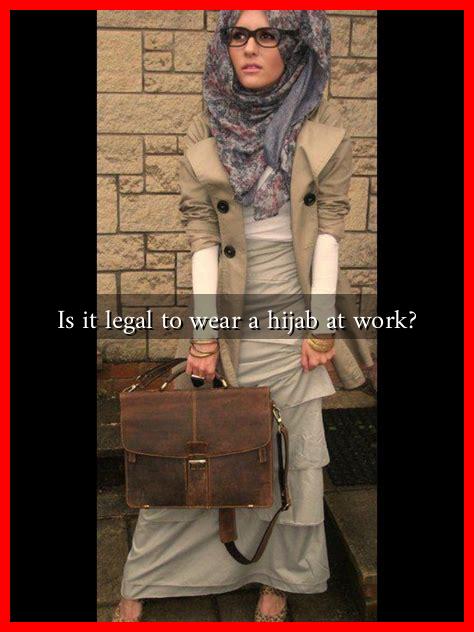-
Table of Contents
Is it Legal to Wear a Hijab at Work?
The hijab, a traditional headscarf worn by many Muslim women, has become a symbol of cultural identity and religious expression. However, the question of whether it is legal to wear a hijab at work remains a contentious issue in various parts of the world. This article explores the legal landscape surrounding hijab-wearing in the workplace, examining relevant laws, case studies, and the implications for both employees and employers.
Understanding the Legal Framework
The legality of wearing a hijab at work largely depends on the country and its specific laws regarding religious expression and workplace discrimination. In many Western countries, laws protect individuals from discrimination based on religion, which includes the right to wear religious attire such as the hijab. Here are some key legal frameworks:
- United States: The First Amendment protects freedom of religion, and Title VII of the Civil Rights Act prohibits employment discrimination based on religion. Employers are required to provide reasonable accommodations for religious practices unless it causes undue hardship.
- European Union: The EU’s Employment Equality Directive prohibits discrimination based on religion or belief. However, individual member states have varying interpretations and implementations of these laws.
- Canada: The Canadian Human Rights Act protects individuals from discrimination based on religion, allowing for the wearing of religious symbols, including the hijab, in the workplace.
Case Studies and Examples
Several high-profile cases have highlighted the legal battles surrounding the right to wear a hijab at work. These cases often serve as precedents for future rulings and can influence public opinion.
- Case of Samira Ahmed: In 2017, a British woman was awarded £8,000 after being dismissed from her job for wearing a hijab. The tribunal ruled that her employer had discriminated against her based on her religious beliefs.
- Case of Asma B. in France: In 2004, France implemented a law banning conspicuous religious symbols in public schools, which sparked debates about the hijab in workplaces. While the law does not apply to private companies, it has influenced public sentiment and employer policies.
- Case of the European Court of Justice (ECJ): In 2017, the ECJ ruled that companies could prohibit employees from wearing visible religious symbols, including hijabs, if it is part of a general policy of neutrality. This ruling has raised concerns about religious freedom in the workplace.
Statistics on Hijab-Wearing in the Workplace
Understanding the prevalence of hijab-wearing in the workplace can provide context for the legal discussions surrounding it. According to a 2020 report by the Pew Research Center:
- Approximately 1.8 billion Muslims worldwide, with a significant percentage of women choosing to wear the hijab.
- In countries like Turkey and Indonesia, the hijab is widely accepted in professional settings, while in Western nations, it often faces scrutiny.
- A survey conducted in the UK found that 60% of Muslim women reported experiencing discrimination at work due to their hijab.
Employer Responsibilities and Best Practices
Employers play a crucial role in fostering an inclusive workplace. Here are some best practices for employers regarding hijab-wearing:
- Implement clear anti-discrimination policies that explicitly mention religious attire.
- Provide training for management and staff on cultural sensitivity and diversity.
- Encourage open dialogue about religious practices and create a supportive environment for all employees.
Conclusion
The legality of wearing a hijab at work is a complex issue influenced by various legal frameworks, cultural attitudes, and individual employer policies. While many countries protect the right to wear religious attire, challenges and discrimination still exist. It is essential for both employees and employers to understand their rights and responsibilities in this context. By fostering an inclusive workplace, organizations can not only comply with legal requirements but also promote diversity and respect for all individuals.
For more information on workplace rights and religious expression, you can visit the U.S. Equal Employment Opportunity Commission.

